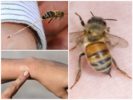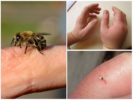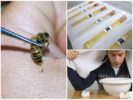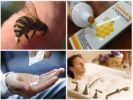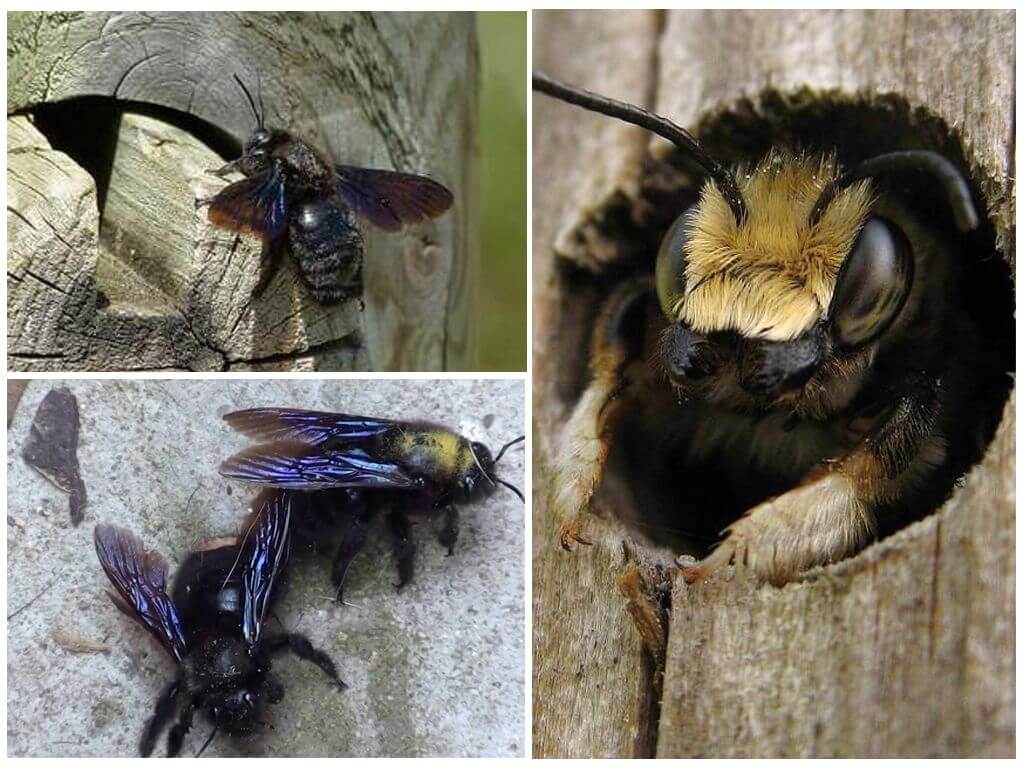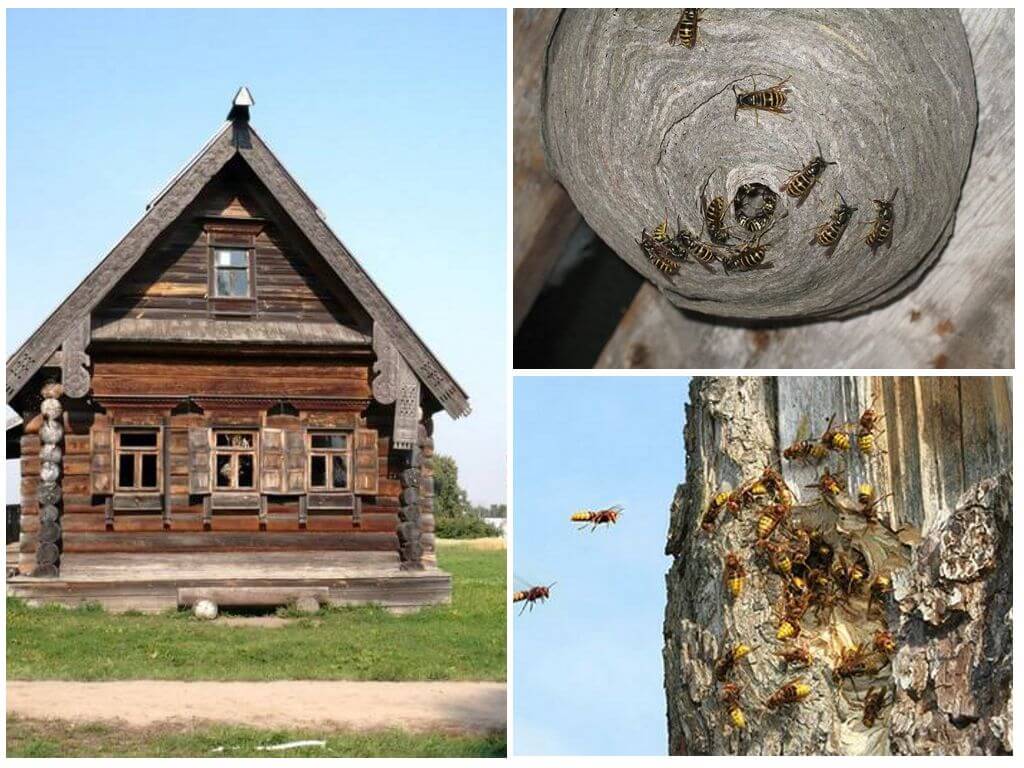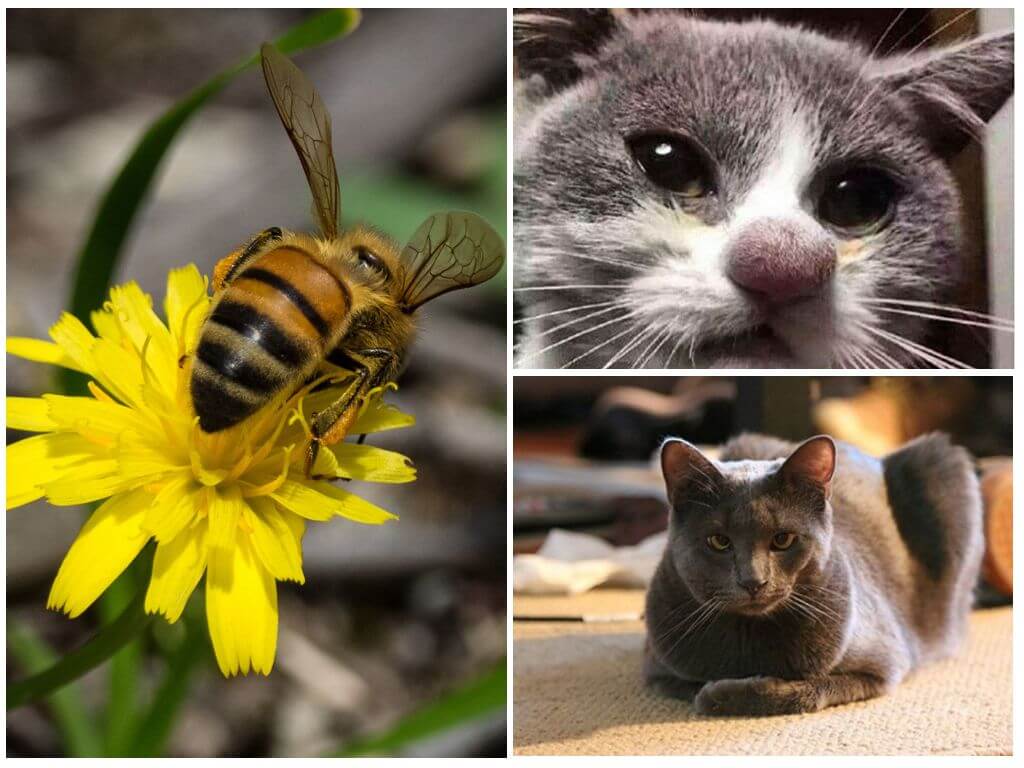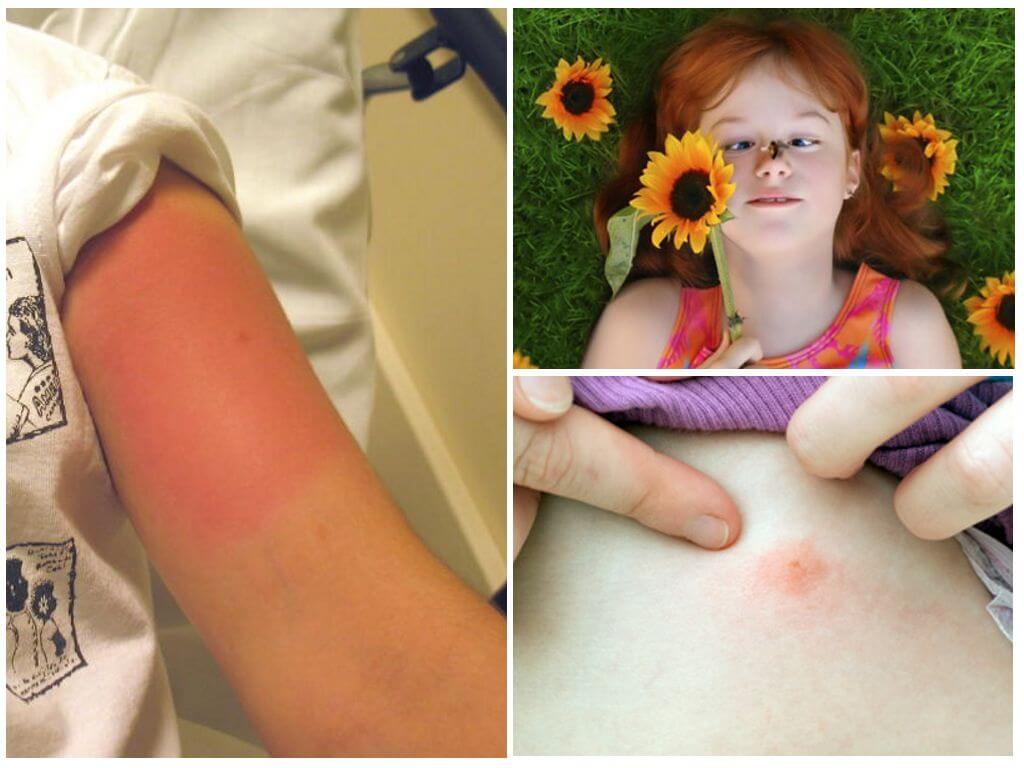- The benefits of a bee sting
- Harm from a bee sting
- Bee venom treatment
- Bee venom treatment
It’s hard to find someone who has not experienced in his life bee sting. Unpleasant burning sensations, pain, intolerable itching and swelling are manifestations of poison, which the insect introduces at the tip of the sting at the time of bite. A bee attack that ends with a bite usually becomes fatal to an angry individual. In the process of attack, the female drives her so tightly the sting into human skin, which is not able to extract it back. As a result, it comes off, and with it a significant part of the intestine of the insect, which leads the individual to inevitable death. In this way, females protect themselves and their nests in times of danger. However, along with pain and frustration, a bee sting has huge health benefits. It is about how treatment with bee stings is used in medicine and will be discussed in this article.
Components of bee venom
Only female individuals produce bee venom, accumulating it in special tanks. And before you figure out what the benefits of a bee sting are, you need to know what components the bee venom contains. The main components of this unique substance are:
- melitin is the basic and most dangerous toxic component of the poison, contributing to the destruction of red blood cells and disrupting metabolic interstitial processes, which leads to muscle contraction;
- Apamine - a protein substance acts on nerve cells, which leads to an increase in motor activity;
- histamine - a toxin that causes an allergic reaction, which is accompanied by the appearance of redness, pain, swelling and vasodilation;
- hyaluronidase - an enzyme that promotes the rapid spread of a toxic composition and the appearance of swelling;
- phospholipase is a component that destroys cell walls.
The basis of bee venom is also made up of elements such as magnesium, phosphorus, sulfur. Carbohydrates, proteins, fats and acids (formic, hydrochloric, phosphoric) are present in it.
The harm or benefit of a bee sting
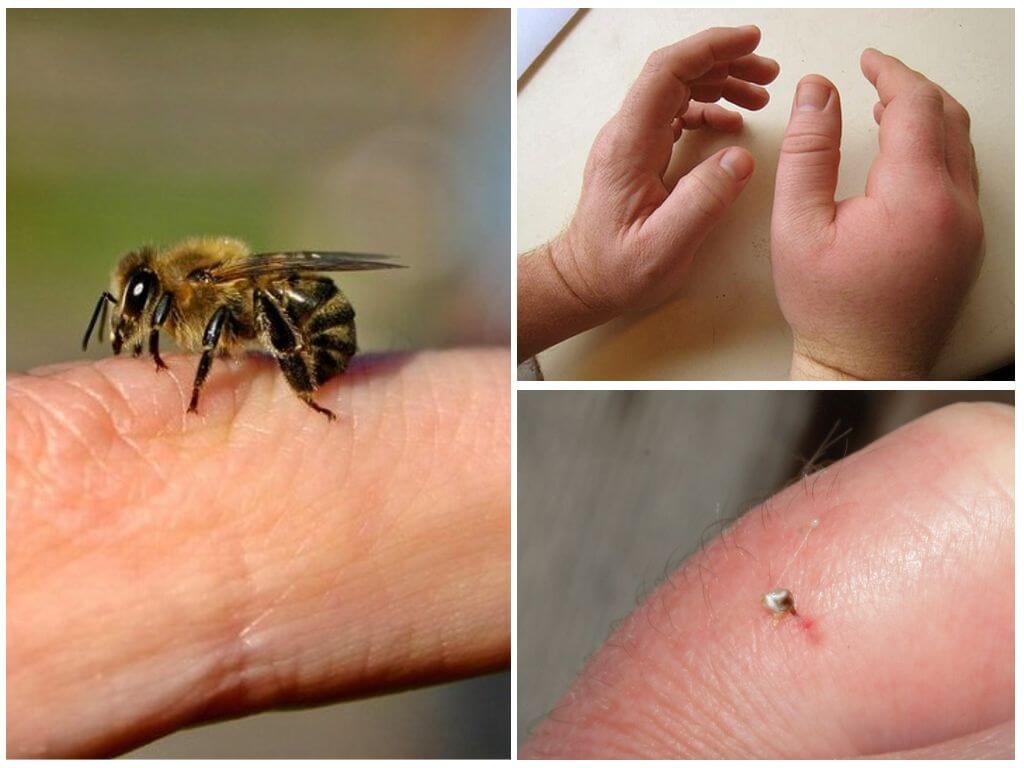
A bee sting can have both negative and positive effects on the human body.
About harm
The consequence of a single bee sting in a healthy person is a local reaction, which is expressed as severe burning pain. Also, swelling and redness occurs at the site of the bite.
Mild allergy to a bee sting manifested in the form of urticaria. Many light blisters appear on the skin that cause itching and burning.
Important!
More serious consequences are accompanied by the development of Quincke's edema. Its characteristic features are swelling not only of the neck and face, but even of the tongue, larynx and trachea, which can entail suffocation. A deadly consequence of a bee sting is anaphylactic shock. With this type of allergy, blood pressure rapidly drops, convulsions or loss of consciousness can occur.
The most serious consequences are accompanied by bee stings in eyes, lip or language. Possible consequences are not only conjunctivitis, blepharitis or panophthalmitis, but also heavy shortness of breath.
Especially hard to tolerate the attacks of stinging insects children and women during pregnancy.This is largely due to the restriction of taking various medications.
About the benefits
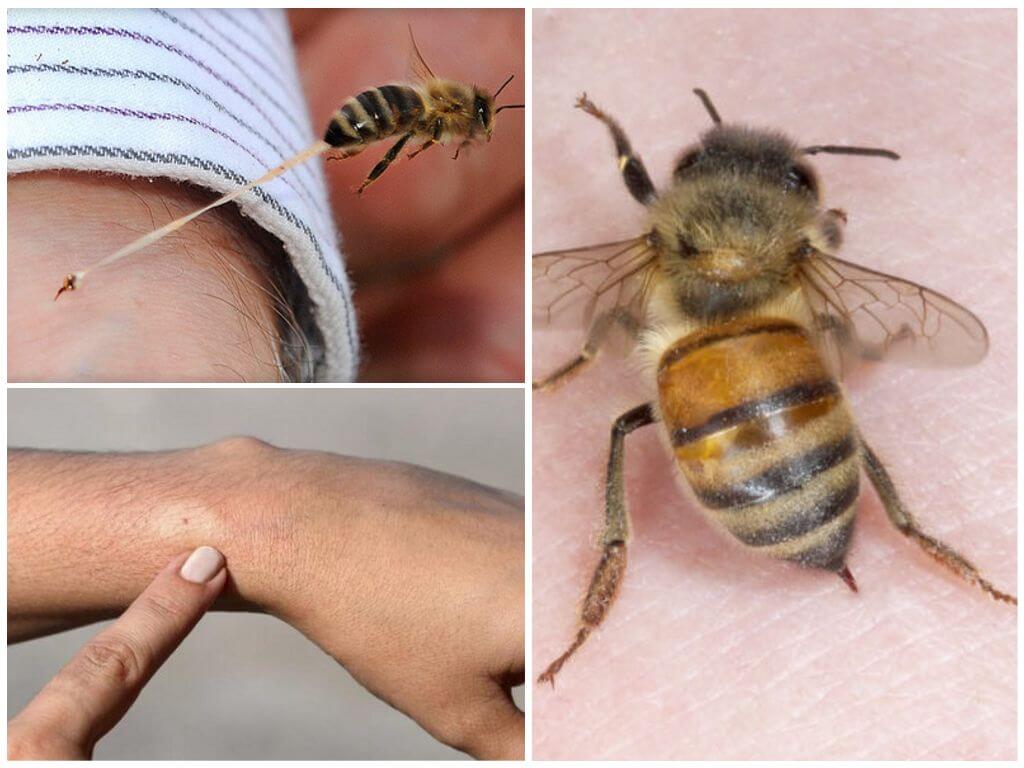
The question whether a bee sting is useful for a person is puzzled by many people. For some, this may seem strange, but the poisonous composition can be not only harmful, but also useful. Treatment for bee stings, referred to in medicine as apitherapy, involves the use of a kind of natural toxin - apitoxin. The latter has the appearance of a thick and transparent yellowish liquid with a characteristic sharp aroma. With a long stay in the air, the poison quickly thickens. The toxic mixture is very resistant to both high and low temperatures and is able to maintain its properties even for decades.
It turned out that all of the above components, which are part of bee venom and adversely affect the human or animal body, can also have a therapeutic effect. Their usefulness lies not only in improving metabolism and restoring the cardiovascular system, but also in normalizing microcirculation and hormonal levels.
On a note!
Bee venom also reduces the manifestations of the inflammatory process, inhibiting the development of harmful microorganisms, and increases the content of red blood cells. Treatment with bee stings has a beneficial effect on the peripheral and nervous systems.
How to be treated with bee stings
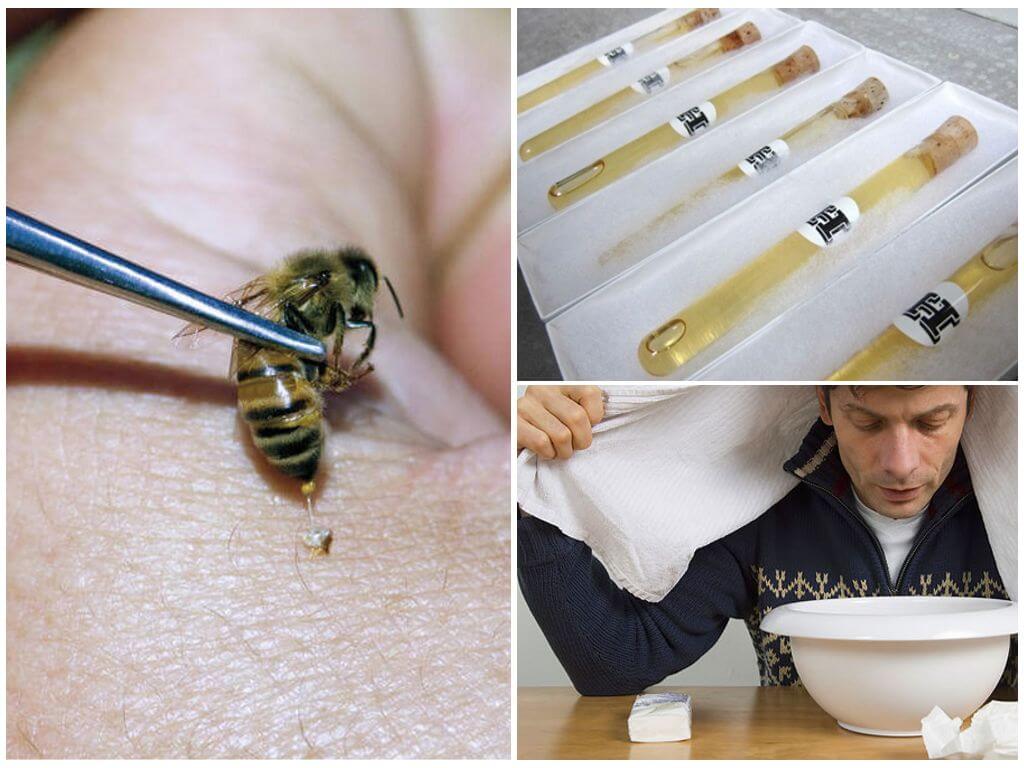
Apitherapy includes various types of treatment, including the use of drugs prepared on the basis of bee venom.
Bee sting
The process itself is quite simple and not much different from the natural attacks of insects. A live bee is taken with tweezers and brought to the surface of the skin, where it makes a bite. The treatment regimen for bee stings is made individually. The duration of the healing process can be up to 1.5 months, during which up to 200 stings are carried out. In one session, up to 40 insects are used, and it should begin with one bite, gradually increasing their number.
The procedure is performed no more than 2 times a week. A sting is pulled out of the skin after a quarter of an hour so that bee toxins can be absorbed into the blood as much as possible. The consequences of a bite are allergies in the form of redness, swelling and burning. Over time, this process is addictive, as a result of which the unpleasant sensations become less pronounced.
On a note!
This method of treating bee stings has two main drawbacks: pain on contact with an insect and lack of control over the amount of poison injected by a pollinator of flowering plants into the human body.
Injections
The procedure differs from the above in the absence of pain. Treatment is carried out by introducing purified poison under the skin near the affected area of the body or diseased organ. Dosage, frequency of procedures and duration of the course are selected individually. In addition, the nature and stage of the disease, as well as the weight of the patient and the presence of concomitant pathologies, should be taken into account.
Inhalation
This procedure involves the inhalation of toxic fumes, whereby the healing components enter the human body through the lungs. Absorbing into the blood stream, they spread throughout the body and have a therapeutic effect on it.
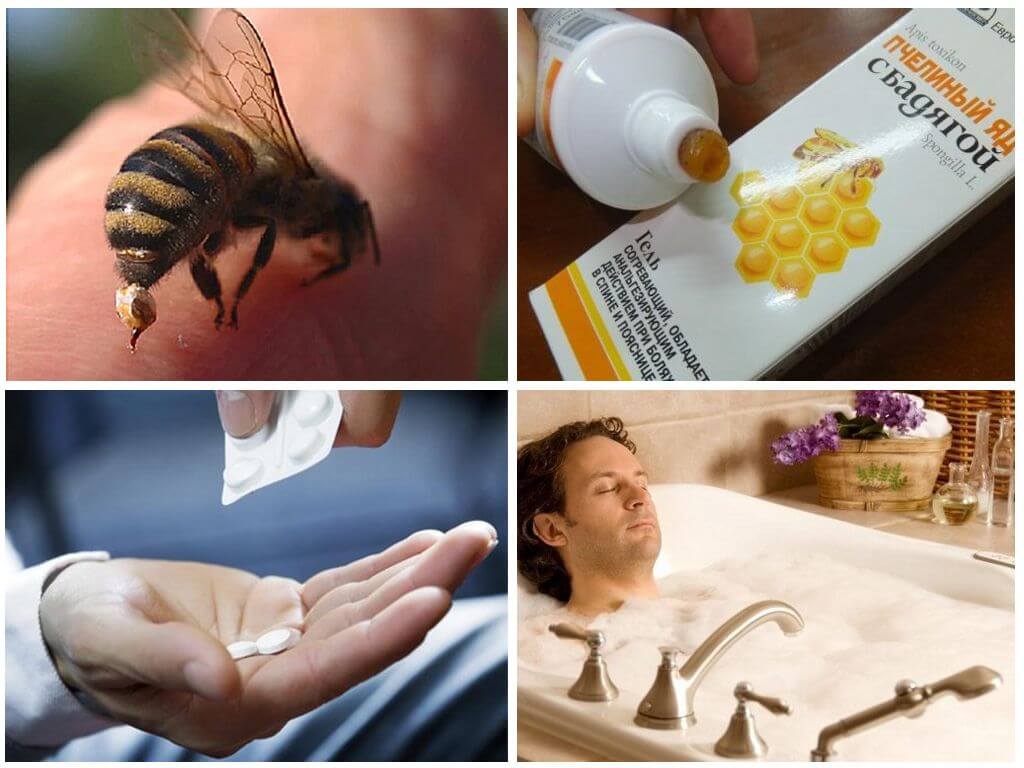
Tablets
They are used to treat radiculitis, as well as neurological diseases. The tablet is kept under the tongue until it is completely resorbed. It is not recommended to swallow the drug, as this can lead to disruption of the gastrointestinal tract.
Cream
One of the simplest and safest methods of apitherapy is the use of a cream or ointment, the basis of which is bee venom. The gel-like consistency of the agent is applied to the affected area of the skin with soft massaging movements. The duration of treatment depends on the individual characteristics and degree of the patient's disease.
Bathtubs
An effective way to treat diseases of the joints and blood vessels is to take baths using powdered bee venom. Such healing procedures are also prescribed in the rehabilitation period.
Combining and alternating these treatment methods, you can achieve an effective result.
Important!
However, not everyone can apply apitherapy, and it is even more unsafe to treat bee stings at home. This treatment method cannot be used for people suffering from liver diseases, as the result of the appearance of toxic substances in the body can be destructive changes.
Apitherapy is also contraindicated in case of heart failure, since the components included in the composition of bee venom contribute to an increase in heart rate. It is strictly forbidden to be treated by bee stings for diabetics, since when they enter the blood, toxic components contribute to the destruction of blood vessels. In this connection, there is a need for consultation of an experienced doctor.
